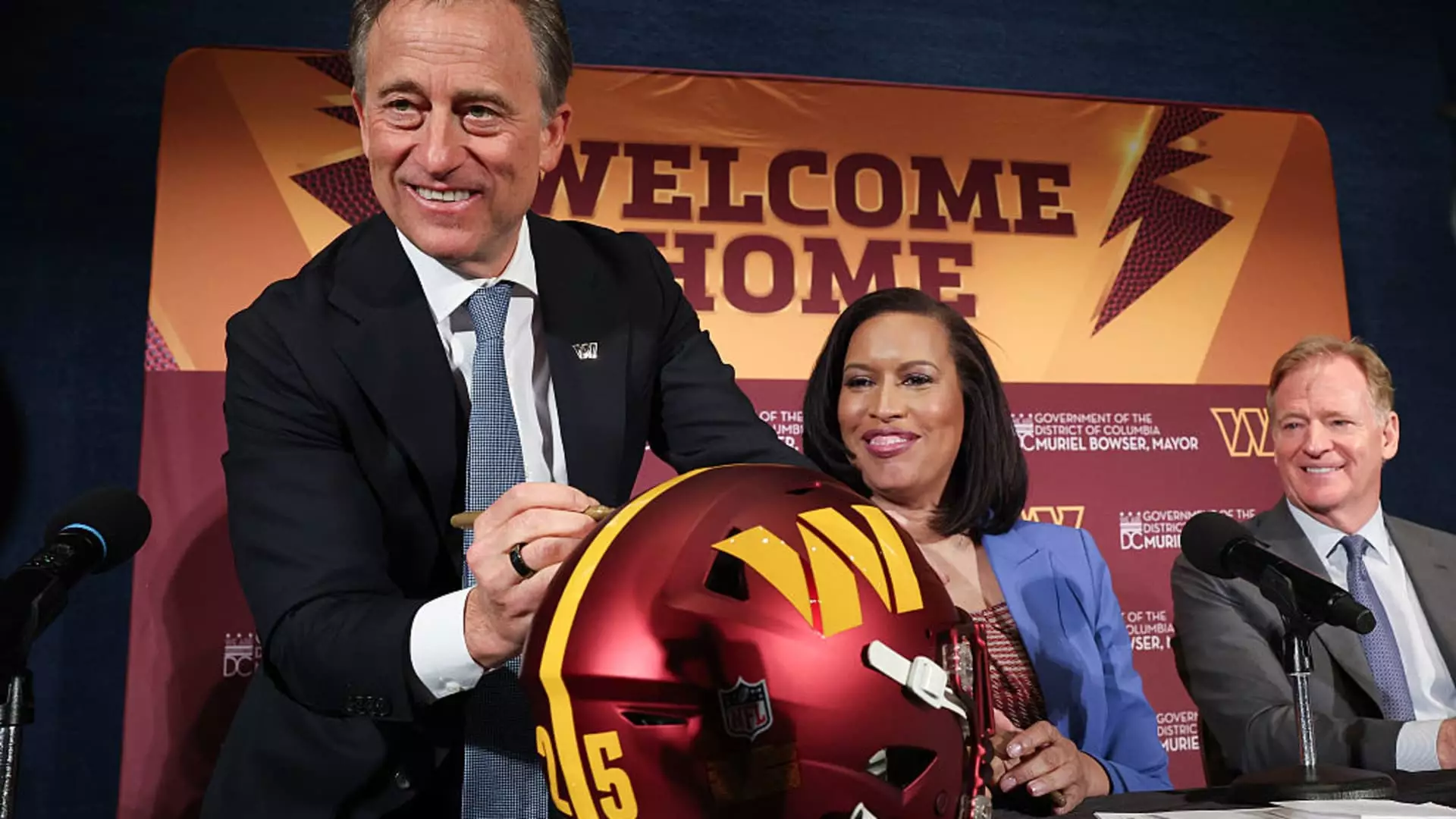In recent years, the ascendancy of private equity investors like Josh Harris has dramatically reshaped the landscape of professional sports ownership. Harris, leveraging his prominent role within the private equity universe, has amassed an impressive portfolio representing a significant chunk of the sporting world’s most lucrative franchises. Their conglomerate, Harris Blitzer Sports & Entertainment (HBSE), is not just an ownership group; it’s a testament to the strategic confidence of private investors who prioritize control, long-term stability, and resilience over the short-term gains that public markets often chase. The smart money is quietly pushing back against the allure of going public, revealing a clear bias rooted in strategic and financial prudence rather than mere tradition or sentimentality.
Harris’s portfolio encompasses ownership stakes in NFL’s Washington Commanders, NBA’s Philadelphia 76ers, NHL’s New Jersey Devils, and even a foothold in the Premier League through Crystal Palace. These are not random investments—they are carefully selected assets aligned with a broader vision of maintaining strategic dominance and maximizing value without succumbing to the volatility of the public markets. Recently, HBSE further cemented its status by securing a $250 million franchise fee to establish a WNBA team set to debut around 2030, underscoring their long-term investment perspective. Valued at nearly $15 billion, HBSE’s growing valuation underscores not just the success of its holdings but also the resilience of private ownership as a model in the sports industry.
Yet, behind this impressive growth lies an unspoken question about the future: at what point, if any, will these conglomerates consider the risks associated with going public? Harris’s stance on this is clear and revealing—he perceives the private valuation as inherently superior to what public markets can offer. His reasoning hinges on the belief that sports teams, when publicly traded, tend to be undervalued and subjected to short-term pressures that don’t align with the long-term investment horizon needed to win championships and generate sustainable growth.
The Risks and Realities of Public Markets for Sports Teams
Harris’s skepticism towards an IPO (Initial Public Offering) for sports teams is rooted in a fundamental understanding of how markets perceive these assets. Madison Square Garden’s experience—the only notable U.S. sports franchise publicly traded—serves as a cautionary tale. Despite the prestige, these teams tend to trade below their intrinsic value, mainly because public shareholders often prioritize immediate financial returns over the enduring competitiveness and strategic investments necessary to sustain a championship-caliber team.
Moreover, public ownership introduces a host of challenges. The pressure to deliver quarterly earnings, an incessant focus on stock prices, and the potential for activist investors to interfere with management decisions create an environment antithetical to the long-term, stability-driven approach favored by private owners like Harris. In sports, particularly in leagues like the NFL, the crucial need to invest heavily in facilities, player contracts, and community reputation requires a degree of financial independence that private control offers. Public markets are simply too volatile and short-term focused to foster the environment necessary for sustained athletic excellence.
Harris’s insight about teams as intergenerational assets highlights an important philosophical divergence: sports franchises are the prototypes of long-term investments, akin to family estates rather than quick-flip commodities. Their value isn’t dictated solely by current profitability but also by future potential, community goodwill, and league-wide strategic moves. Going public would force these assets into a mold that fundamentally conflicts with the stewardship model Harris champions.
The Strategic Advantage of Staying Private
This reluctance to embrace public markets is more than just a preference; it’s a calculated strategic choice. Harris emphasizes the importance of control—an element that private ownership preserves unfailingly. In an environment increasingly dominated by shareholder activism, external mandates, and the relentless pressure for immediate returns, maintaining private control enables owners to prioritize winning and community engagement over shareholder appeasement.
Furthermore, recent developments in the NFL, like permitting private equity firms to acquire minority stakes, exemplify a shift toward more flexible, long-term partnership models. Harris views these arrangements as empowering, not limiting, because they allow flexible capital infusion without diluting ownership control. These long-term funds tend to be less interested in quarterly returns and more invested in the ecosystem’s overall health, aligning perfectly with the vision of owners who want to build sustainable, championship-bound franchises.
Harris’s successful move to relocate the Commanders’ stadium reflects this strategic patience—as profits will be realized years from now. This exemplifies how private ownership thrives on planning years ahead of the current market sentiment, something that public owners—once they’ve gone public—could never replicate with the same degree of flexibility or strategic coherence.
Ultimately, Harris’s perspective underscores a broader truth: in sports, the quest for short-term market valuation is a dangerous distraction. Private ownership preserves the integrity, focus, and long-term vision necessary to build enduring, value-generating sports empires. While the idea of an IPO might seem attractive as a means of capitalizing on rising valuations, the inherent risks and management challenges make it a less viable route for the future of elite sports ownership—at least until the public markets evolve to better understand the unique nature of these assets.

